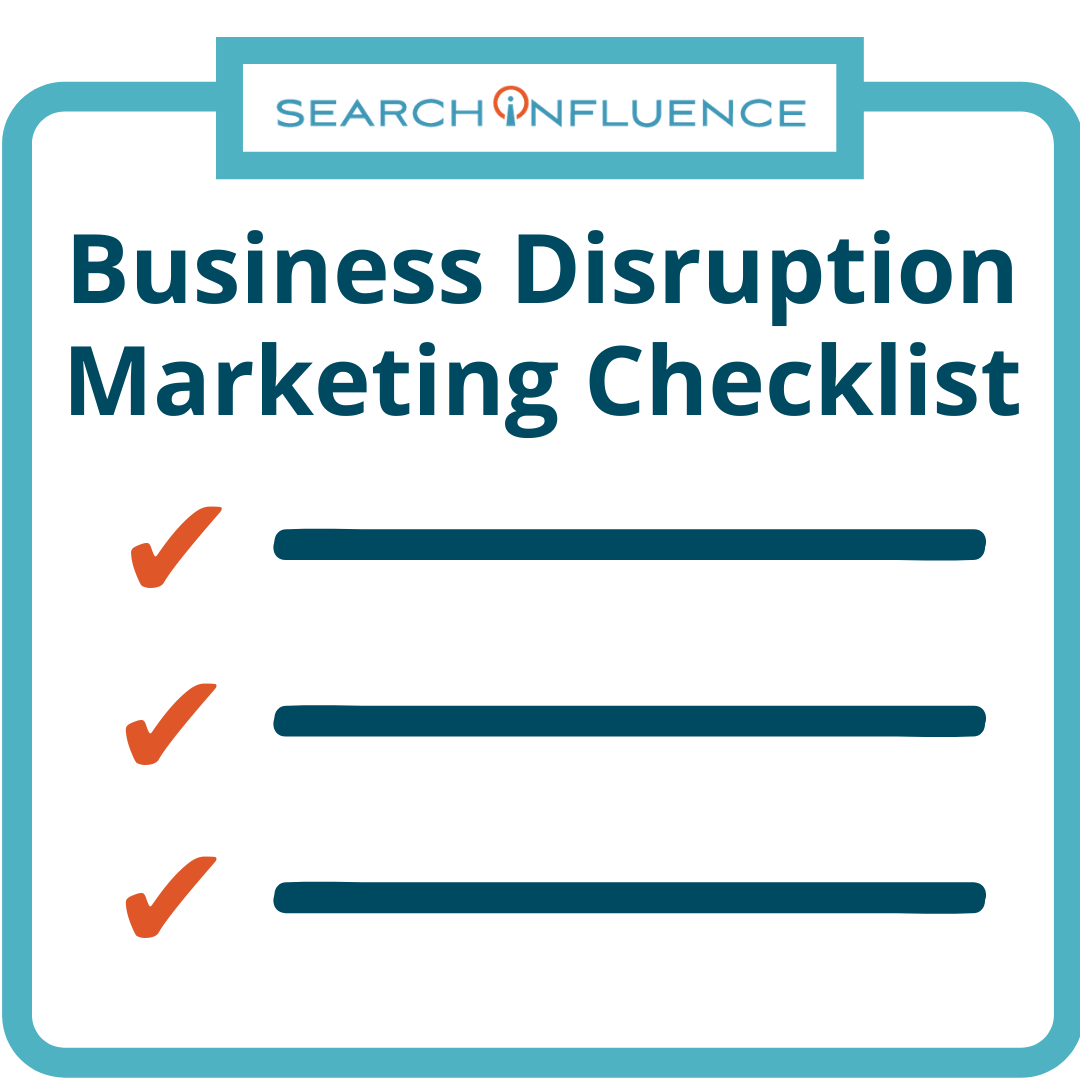Business Disruption Marketing Checklist: How to Communicate When You Are Closed, Remote, or Open
March 14th, 2020 by


Regardless of industry, communication about your status will help mitigate disruptions and profit loss as much as possible, and when you are reopen, can help you get back on your feet more quickly. Consider taking these steps to protect your business before, during, and after a time of business disruption.
Marketing Checklist If Business Will Be Completely Closed
- Pause all advertisements for short-term actions or foot traffic. (Keep advertising long-term sales cycle services.)
- Pause any pre-scheduled social media posts.
- Add a special notice or banner across the top of the website and to any “Contact” pages notifying visitors that the business will be closed.
- Mark business as “temporarily closed” on Google My Business. Update hours on Facebook and other listing websites that show business hours of operation.
- Update all email signatures that the business will be closed and staff will have limited or no access to email (depending on the business).
- Set up email auto replies for all accounts that will not be checked regularly, especially general inquiry emails like info@example.com, questions@example.com, etc.
- Update all voicemail recordings.
- Create a post on social media (Facebook, Instagram, Twitter, LinkedIn, etc.) to notify followers of the business’s status.
- Collect all passwords to ensure that all accounts (email, social media, website, etc.) can be accessed remotely.
- Notify customers and vendors via email that the business will be closed and provide contact information should they need to contact the business during that time.
- If applicable, forward calls to a mobile phone or a line that will have service.
- Collect contact information for all employees, communicate the business’s plan company-wide, and provide regular updates during and after the crisis.
Marketing Checklist If Business Will Remain Open Or With Modified Operations
- Pause advertisements for services that may be limited during this time.
- Add a special notice or banner across the top of the website and to any “Contact” pages notifying visitors that business is operating.
- Update all email signatures that the business is operating.
- Update all voicemail recordings that the business is operating.
- Create a post on social media (Facebook, Instagram, Twitter, LinkedIn, etc.) to notify followers that business is open.
- Pause any pre-scheduled social media posts that might be insensitive to the current climate.
- For example: “It’s a beautiful day to go to the beach!”
- Collect all passwords to ensure that all accounts (email, social media, website, etc.) can be accessed remotely.
- Notify customers and vendors via phone or email that the business will remain open. If any communication will be modified during that time, provide the appropriate contact details.
- If applicable, forward calls to a mobile phone or a line that will have service.
- Collect contact information for all employees, communicate the business’s plan company wide, and provide regular updates during and after the crisis.
Marketing Checklist For After The Crisis
- Unpause advertisements.
- Remove related messaging from email signatures and voicemails.
- Remove call forwarding and update auto reply email settings.
- Update special notice or banner on website to indicate the business is open / back to standard operations. This message can be left on the website for a few days or until things get back to “normal”.
- Update social media followers (Facebook, Instagram, Twitter, LinkedIn, etc.) that the business is open and share any pictures, news, or any other updates that might be meaningful to that audience.
- Update hours on Google My Business, Facebook, and other listing websites that show business hours of operation.
- Notify customers and vendors via phone or email that the business is open and will be operating as usual moving forward. If the business is not able to operate as usual, provide the appropriate details and keep customers and vendors informed until business has returned to normal.
We truly hope you find this list helpful during any business disruption period and that it helps mitigate the negative impacts of closure or altered operations. If you have any additional tips, comment with them below!

